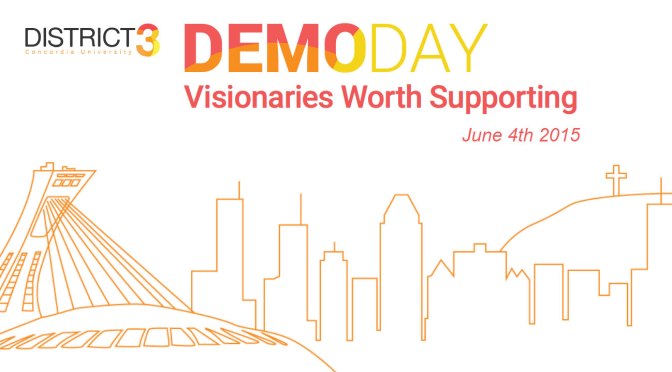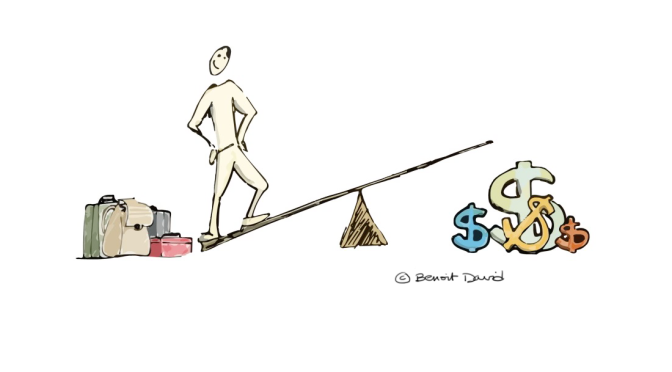Rates… How much to charge? Who’s charging how much? What for? etc. Very subjective topic, and not that straightforward to discuss.
I blogged about this topic last year, What’s in a rate? and Was the rate worth it? to discuss some intrinsic considerations that go into determining rates.
This is a brief summary of 90+ minutes of discussions…
Last Wednesday I facilitated an ISPI Montreal event, entitled “Everything you always wanted to know about rates, but were afraid to ask…“. It was a pretty good event, lots of questions and interaction between participants. We were particularly happy that we had a fair number of student from Concordia University’s Educational Technology program: gave them the opportunity to hear their future peers talk about this hot, business topic.
Part of the event was to present the results of a survey we ran to our local ISPI Montreal members, and compare the results to the same survey dating back to 2004: the conclusion? Rates have not changed that much over a decade (see for yourself). Most likely due to the fluctuation of the economy, which affects the job market and the expenditures for training. And we all know that tougher times brings down the axe on training which is always front and center for the chopping block. 😦
We basically asked the participants two questions, to trigger some discussion and reflection…
First: What factors influence the rate you charge when working directly with a client?
Participants broke off in small groups and went off to come up with their prioritized list of factors. We tried to mingle the students evenly so they benefit as mush as possible from their future peers.
The result? See for yourself… (sorry, I’m missing one)
Of course skills set, experience and knowledge came out, but not education per se, or more precisely, the need to have an education such as the one offered in Educational Technology.
What came out more was about the type of work and the context in which that work needs to be done: type of work, the market, the economy, the profile of the work, its length, specific technical skills, the budget available, the industry, etc.
Second: How do you explain/justify your rate?
This question we addressed as one group.
Right off the bat there was a reaction to the word “justify”. Didn’t expect it but wasn’t surprised. What was argued is the rate you present is the rate that should be. I guess it’s fine when either you offer a pretty clear value of what that rate buys, or there isn’t much competition, or you’re in demand – one would assume that if you are in demand then you are worth what you are charging.
But when you don’t have any of those conditions, it’s a different ballgame. Especially if you’re dealing with a client that is bottom-line driven. But you can always pass.
The discussion moved towards the concepts of value, uniqueness and expectations. In essence, it’s about being a business: being a consultant requires that you look at yourself as the “product” your business offers. As such, you need to need to consider these concepts and package a service offer that supports the rate you want. Or, as one of the students said, the rate you “offer”.
But all in all, rates are just a unit for calculations, right? The bigger question is “how much one takes to do a job?” If one person charges $100/hr and takes 100 hrs to do a job, while another charges $75/hr and takes the same amount of time, with the same outcome in quality and alignment with expectations, why is the cost different? We often say that in theory, the higher the rate, the faster the job and the higher the quality, right? Or is it not so clear cut?
As I say in my previous posts, there are a lot of intrinsic aspects that add value to a person offering their services. The key, as it was discussed in the latter part of the evening, is the value offered and the value required. This leads to clearly stating and understanding expectations from both sides of the fence.
One point was brought up about using salary as a gauge to determine an equivalent rate. A friend of mine who’s working in a para-public organization explained to me the way they do it: you take the salary, for this example let’s say… $50k for a junior position, add 30% to cover benefits, and then account for how much time off you want, how much time you think you’ll need to run your business and LOOK FOR WORK, that gives you a daily rate of about $325 or an hourly rate of $41. These numbers came up with this little Excel sheet I made for you. 🙂
More live discussions should be had, on topics such as base Ratios for Design and Development, scoping & estimating, constraints & risks…
Makes sense?
PS: you can always take a look at my previous posts on these topics:

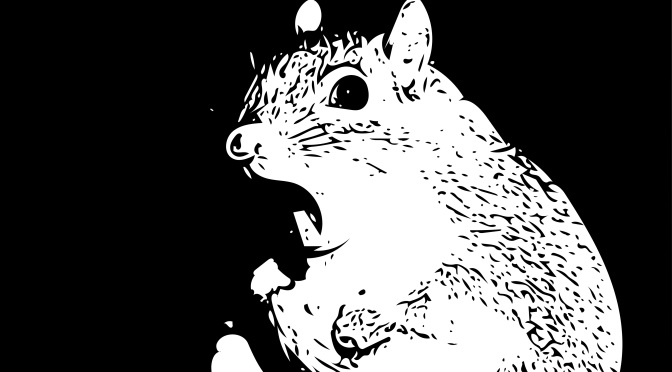
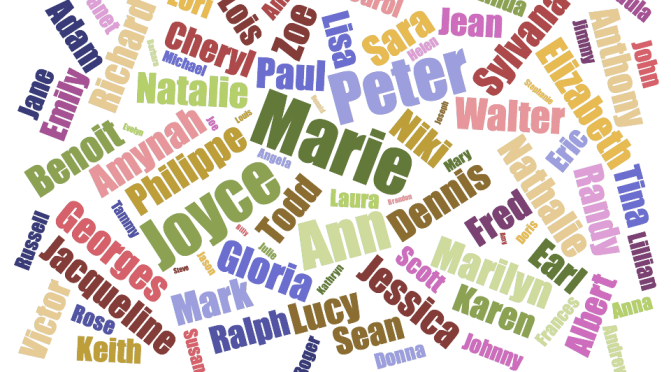
![OLE! …or the Organic Learning [Experience]](https://benoitdavid.files.wordpress.com/2015/09/ole.jpg?w=672&h=372&crop=1)



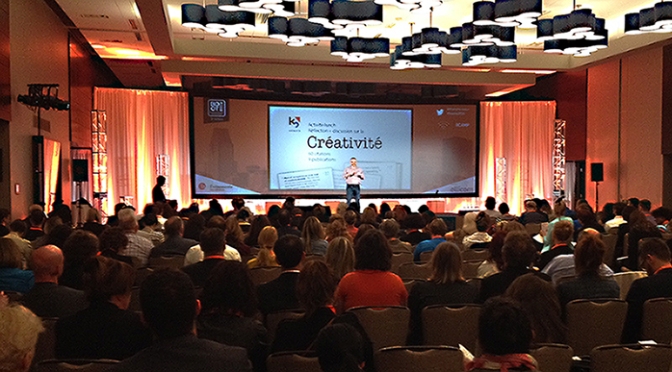
 Anyway, enough with that and on to the activity in question. So with the help of a very good friend of mine, who specializes in face-to-face learning, we devised an activity to reflect and discuss the meaning of creativity, its requirements and its implications. To do that we gathered about 60 quotes from various people and authors out of 9 books on creativity and innovation (see list below). Each quote was printed on a card, and cards were randomly grouped on the tables setup for people to eat their lunch. The idea was for each person to read the quote, reflect on it, decide if they agreed or not with it, and discuss it with their lunch buddies. Then, go around and discuss other quotes with other people. I even prepared an
Anyway, enough with that and on to the activity in question. So with the help of a very good friend of mine, who specializes in face-to-face learning, we devised an activity to reflect and discuss the meaning of creativity, its requirements and its implications. To do that we gathered about 60 quotes from various people and authors out of 9 books on creativity and innovation (see list below). Each quote was printed on a card, and cards were randomly grouped on the tables setup for people to eat their lunch. The idea was for each person to read the quote, reflect on it, decide if they agreed or not with it, and discuss it with their lunch buddies. Then, go around and discuss other quotes with other people. I even prepared an 